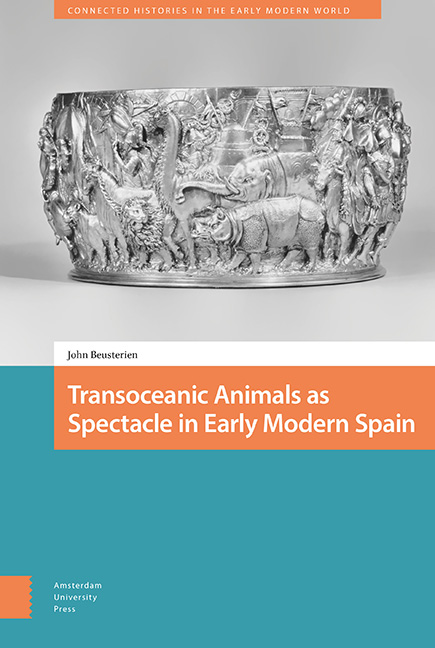Book contents
- Frontmatter
- Dedication
- Contents
- List of Illustrations
- Prologue
- Introduction: Armored Beasts and the Elephant in the Room
- 1 Hawa’i the Elephant and Abada the Rhinoceros
- 2 Fuleco the Armadillo
- 3 Jarama the Bull and Maghreb the Lion
- Conclusion: Biogeography as a Teaching Tool
- Appendix 1 Biogeography Course Project: Naming an Early Modern Animal
- Appendix 2 Bibliography for the Study of Animals and Early Modern Spain
- Index
2 - Fuleco the Armadillo
Published online by Cambridge University Press: 21 November 2020
- Frontmatter
- Dedication
- Contents
- List of Illustrations
- Prologue
- Introduction: Armored Beasts and the Elephant in the Room
- 1 Hawa’i the Elephant and Abada the Rhinoceros
- 2 Fuleco the Armadillo
- 3 Jarama the Bull and Maghreb the Lion
- Conclusion: Biogeography as a Teaching Tool
- Appendix 1 Biogeography Course Project: Naming an Early Modern Animal
- Appendix 2 Bibliography for the Study of Animals and Early Modern Spain
- Index
Summary
Abstract
Chapter 2 provides a biogeography of Fuleco the armadillo, beginning with his birth in South America. Gonzalo Argote de Molina placed Fuleco's carapace in his collection in Seville and Nicolás Monardes visited Argote's collection, thereafter publishing a woodcut image of Fuleco (1571 and 1574). Fuleco functioned as a specimen in a modern museum in the sense that Argote, following the model of other Renaissance curiosity cabinets, sought to create a theater of the world. Fuleco was an important collectible because his body was considered an American wonder in which nature fashioned a bard on the skin of an unusual horselike animal. By contrast, Fuleco as specimen symbolically enhanced the value of live horses and armor as collectibles in both Argote and King Philip II's collection.
Keywords: museum history, armor and bards, Fuleco the armadillo (ca. 1559–ca.1569), Philip II of Spain (1527–98), Nicolás Monardes (1493–1588), Gonzalo Argote de Molina (1548–96)
Museum animals are distinct from others because they receive the beautifully severe honor of becoming specimens after biological death. For each taxidermy animal on display in museums, thousands of others hide away in storage facilities. The reconstruction of the lives of individual animals in museums is daunting and often impossible to chart fully. But many animal bodies that survive or once existed in museums deserve biogeographies.
Some museum scholars are studying individual animal specimens. The Afterlives of Animals: A Museum Menagerie (Alberti 2011), for instance, examines the individual material lives and afterlives of seven museum animals. Some of them had names, such as Alfred the gorilla. Others had none. One study in The Afterlives of Animals: A Museum Menagerie examines the biogeography of a bird species commonly known as the hen harrier. “The Biogeogeographies of a Hollow-Eyed Harrier” is inspired by a desiccated specimen of a harrier found in the Hunterian Zoological Museum in Edinburgh and retells the fascinating story of the life of the harrier specimen through images of the bird (drawings and photos) and other forms of interdisciplinary research (Patchett, Foster, and Lorimer 2011; Foster and Lorimer 2012).
- Type
- Chapter
- Information
- Transoceanic Animals as Spectacle in Early Modern Spain , pp. 115 - 172Publisher: Amsterdam University PressPrint publication year: 2020



